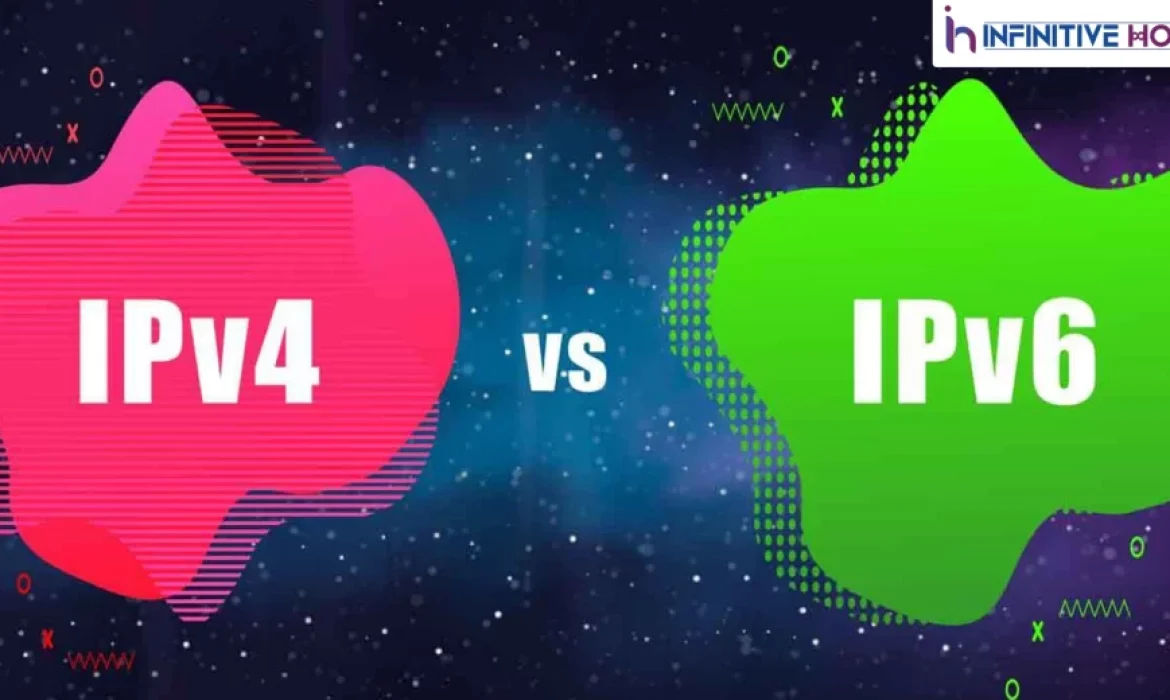What is IP ?
IP stands for Internet Protocol. Eac h device on a network is given a unique IP address. The Internet Protocol (IP) addresses of each device are used to communicate with each other. In addition, it serves as a unique identifier for the device on a network. It specifies the packets’ technical structure.
IP and TCP are sometimes referred to as a TCP/IP network because of the way they interact together. Connecting the source and destination in a virtual way.
It is possible to think of a network device’s IP address as an alphanumeric number assigned to it by the network administrator. So that each device on a network may be uniquely identified, an IP address is allocated to each one. The Internet Protocol Version 4 (IPv4) is used by TCP/IP to make packet routing easier (Internet Protocol version 4).
A network address and a host address are both included in an IP address, which is why there are two distinct IP addresses. Internet Protocol (IP) addresses come in two varieties: static and dynamic.
-
IPv4
-
IPv6
What is IPv4?
Version 4 of the Internet Protocol (IP) is known as IPv4. It’s the most up-to-date and widely-used IP address. There are four numerals in the address, separated by “dots” (periods). Each gadget has its own unique IP address. IPv4 has a drawback in this regard.
The world’s population is at 7.6 billion people. Every internet user has multiple devices linked to the internet, and private businesses are no exception. IPv4 has 4 billion addresses, which is not enough for every internet-connected device on Earth.
Though a variety of approaches have been developed to preserve bandwidth and slow down the depletion of an IP address, such as variable-length masks, network address translation, port address translation, classes, inter-domain translation. A public IP address is transformed into a private IP address, allowing a person with a public IP address to access the internet. As a result, the development of IPv6, a newer generation of IP addresses, was spurred on by this.
What does IPv6 stand for?
Although 4 billion addresses were expected to be plenty for IPv4, the developers were incorrect. IPv6 is the next generation in terms of IP addresses. IPv4 and IPv6 are fundamentally different when it comes to their ability to handle greater IP addresses. IPv4 and IPv6 addresses are available in hexadecimal formats of 32 and 128 bits. IPv6 features a significantly simpler header and a lot bigger address space than IPv4.
In order to migrate from IPv4 to IPv6, it provides the following strategies:
Pv4 and IPv6 can coexist on the same device because of dual stacking.
Tunneling: All users on an IPv6 network communicate with an IPv4 network to reach an IPv6 network using this method.
Communication between hosts running different versions of the Internet Protocol is made possible through the use of network address translation.
A mixture of numerals and alphabets can be found in this address. IPv6 can generate over 340 trillion (3.4*1038) addresses since it uses both integers and alphabets.
There are 8 sets of 16 bits each that make up the 128-bit hexadecimal address of IPv6. Each set is separated by a colon. Four bits are represented by each hexadecimal character in IPv6. As a result, we must convert 4 bits at a time to hexadecimal.
Differences between IPv4 and IPv6
|
IPv4 |
IPv6 |
|
|
Address length |
IPv4 is a 32-bit address. |
IPv6 is a 128-bit address.In order to migrate from IPv4 to IPv6, it provides the following strategies: |
|
Fields |
Dots separate the four fields that make up an IPv4 address (.). |
Eight alphanumeric fields are separated by a colon in an IPv6 address. |
|
Classes |
Using IPv4, there are five separate classes of IP addresses: Class A, Class B, Class C, and Class D. |
IPv6 does not have a concept of sub net masks or sub net classes. |
|
Number of IP address |
The number of IP addresses in IPv4 is restricted. |
In IPv6, there are a lot more IP addresses available. |
|
VLSM |
Ipv4 is compatible with VLSM (Virtual Length Sub net Mask). The term “VLSM” refers to the ability of IPv4 to divide an IP address into many sub nets of varying sizes. |
It doesn’t have VLSM support. |
|
Address configuration |
It can be set up manually or automatically using DHCP. |
Renumbering can be done manually or using DHCP. |
|
Address space |
In total, it creates 4 billion distinct addresses! |
This software generates 340 undecillion unique identifiers. |
|
A secure connection from beginning to end |
An end-to-end connection can’t be guaranteed in IPv4. |
End-to-end IPv6 connection integrity is a real possibility. |
|
Security features |
In order to keep your data secure, there are Security in IPv4 is a function of the application. There is no consideration for security when developing this IP address. |
IPSEC was created in IPv6 for security reasons. |
|
Address representation |
IPv4 uses a decimal representation of the IP address. |
In IPv6, the hexadecimal encoding of an IP address. |
|
Fragmentation |
Senders and forwarding routers are responsible for fragmentation. |
Only the senders are responsible for fragmentation of messages. |
|
Packet flow identification |
Ipv4 does not have a technique for identifying packet flows. |
Packet flow identification is accomplished through the usage of the header’s flow label field. |
|
Checksum field |
IPv4 supports the checksum field. |
IPv6 does not support the checksum field. |
|
Transmission scheme |
IPv4 is currently transmitting data over the network. |
IPv6 multi casting, on the other hand, allows for more efficient network operations. |
|
Encryption and Authentication |
Neither encryption nor authentication are provided by this method of encryption and authentication. |
As a result, it protects the user’s identity and data. |
|
Number of octets |
There are four octets in all. |
Eight fields, each of which includes two octets, make up the data structure. As a result, IPv6’s total number of octets is 16. |
Conclusion:
IPv6 maintains many of the fundamental notions of IPv4, but makes numerous adjustments to the finer points. There are only limited IPv4 addresses, so IPv6 was created to incrIn order to migrate from IPv4 to IPv6, it provides the following strategies:ease the number of addresses available for use. Scalability, adaptability, and seamless networking are all made possible by IPv6.


.webp)





